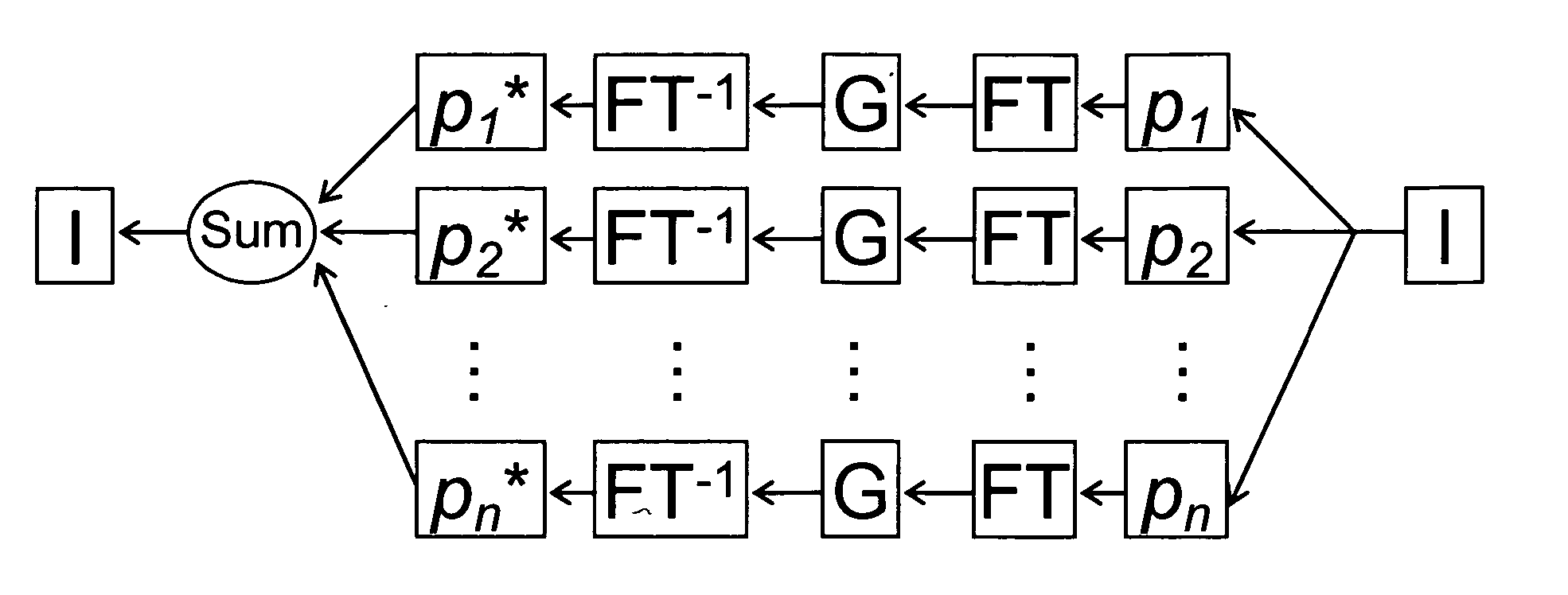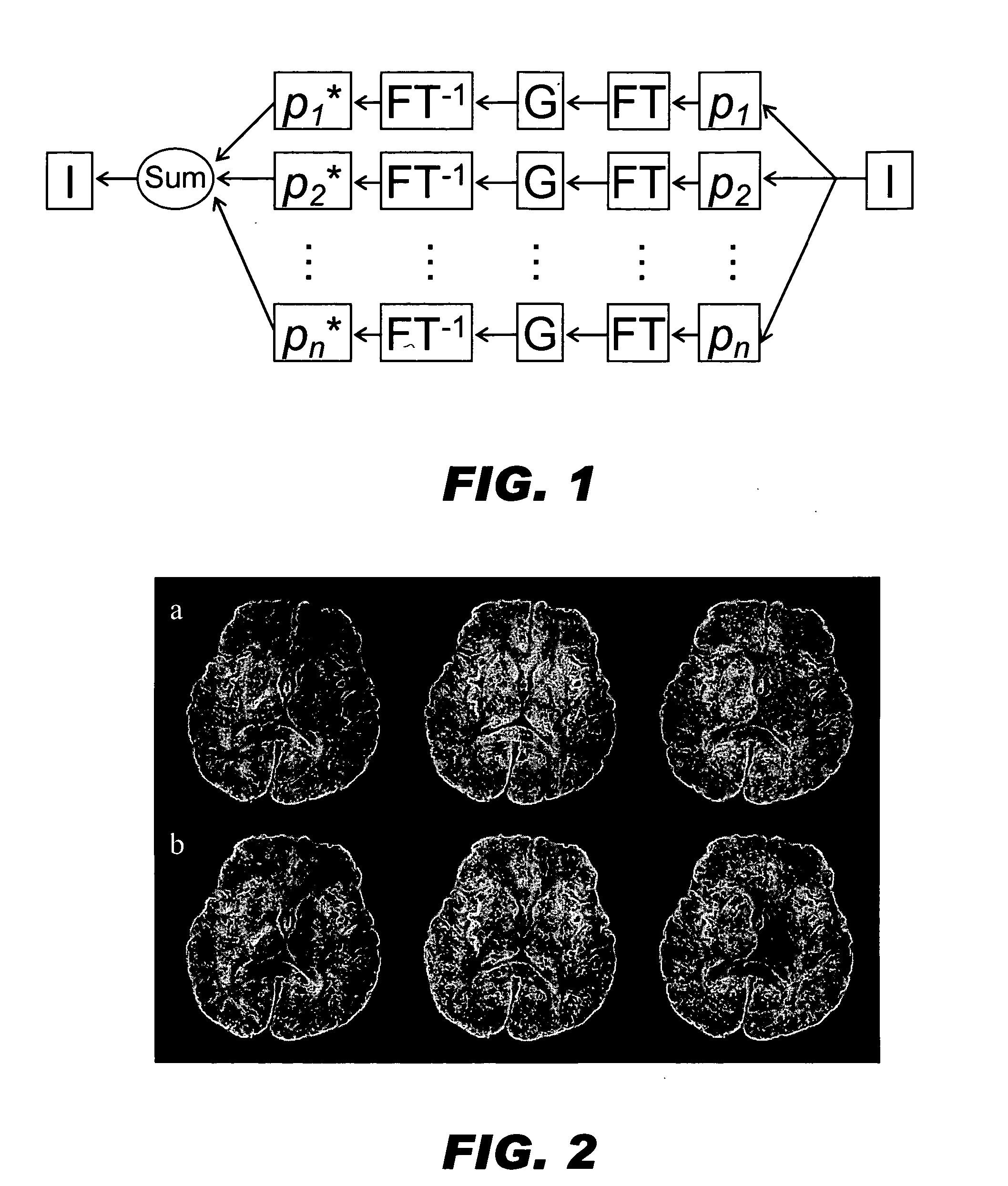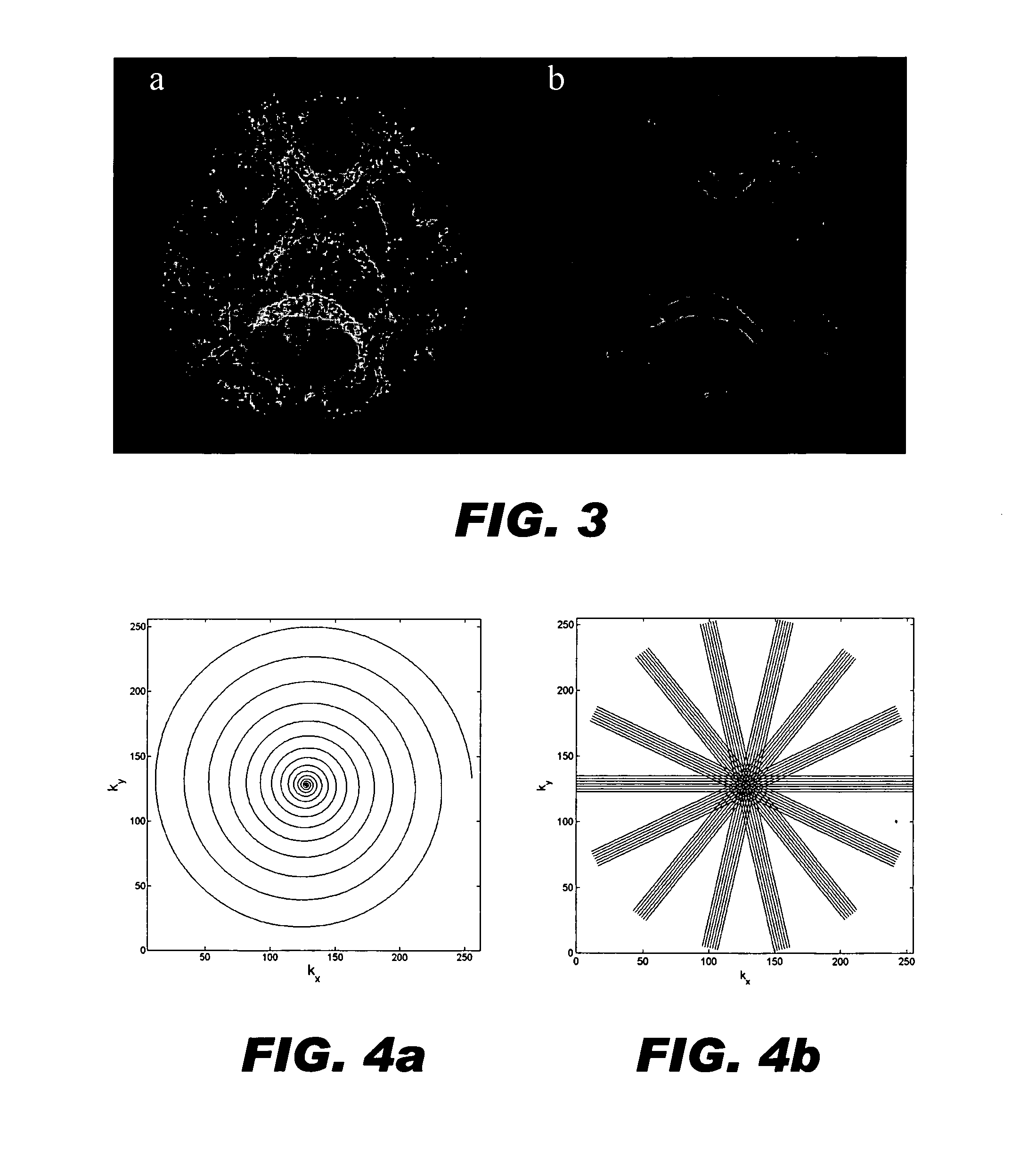Generalized MRI reconstruction with correction for multiple image distortion
a multi-image distortion and generalized technology, applied in the field of multi-dimensional magnetic resonance imaging, can solve the problems of few studies on off resonance correction, image blurring, and distortion of space data,
- Summary
- Abstract
- Description
- Claims
- Application Information
AI Technical Summary
Problems solved by technology
Method used
Image
Examples
Embodiment Construction
[0025] Consider first the conventional, generalized discrete notation for MRI data acquisition for an arbitrary k-space sampling pattern.
[0026] The signal formation in k-space for a multi-coil MR experiment with an arbitrary k-space trajectory can be written for the γth-coil as: m(kl)=∑ρ=1N*Nsγ(rρ)v(rρ)ⅇ-j klrρ(1)
or more explicitly written for the γth-coil as: (mγ(k0)mγ(k1)⋮mγ(kκ))=(sγ(r0)ⅇ-j k0r0sγ(r1)ⅇ-j k0r1⋯sγ(rN2)ⅇ-j k0rN2sγ(r0)ⅇ-j k1r0sγ(r1)ⅇ-j k1r1⋯sγ(rN2)ⅇ-j k1rN2⋮⋮⋰⋮sγ(r0)ⅇ-j kκr0sγ(r1)ⅇ-j kκr1⋯sγ(rN2)ⅇ-j kκrN2)(v(r0)v(r1)⋮v(rN2))=mγ=Eγvv=(EHE)-1EHm(2)
[0027] Here, the vectors m=[m0 m1 . . . mnc]T and v are of lenthl nk*nc and N*N, respectively (nk denotes the total number of k-space sampling points, nc denotes the total number of receiving coils, and N denotes the number of points along each dimension of the image), and consequently the matrix E=[E0 E1 . . . Enc]T and (EHE) must be of size nk*nc×N*N ...
PUM
 Login to View More
Login to View More Abstract
Description
Claims
Application Information
 Login to View More
Login to View More - R&D
- Intellectual Property
- Life Sciences
- Materials
- Tech Scout
- Unparalleled Data Quality
- Higher Quality Content
- 60% Fewer Hallucinations
Browse by: Latest US Patents, China's latest patents, Technical Efficacy Thesaurus, Application Domain, Technology Topic, Popular Technical Reports.
© 2025 PatSnap. All rights reserved.Legal|Privacy policy|Modern Slavery Act Transparency Statement|Sitemap|About US| Contact US: help@patsnap.com



